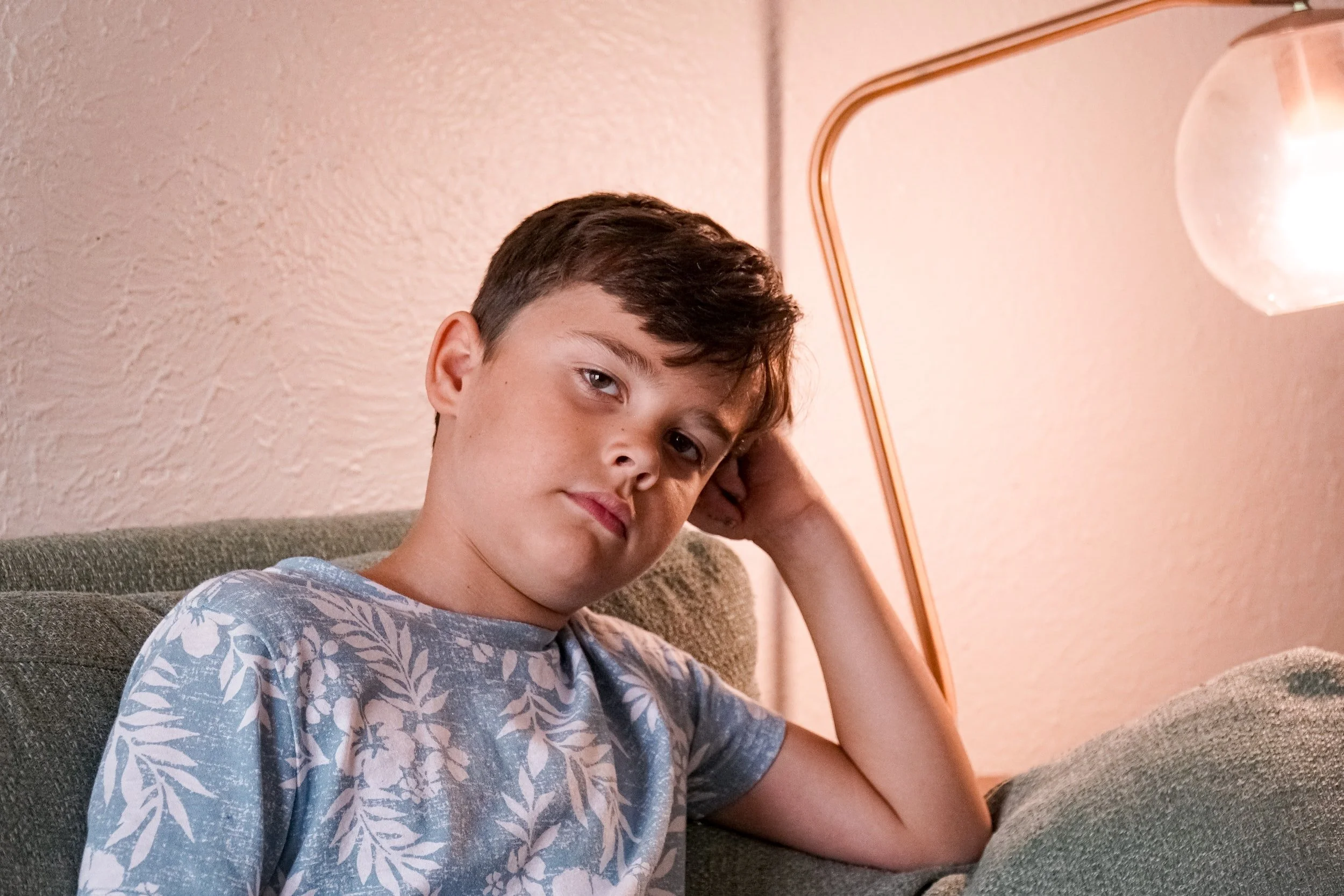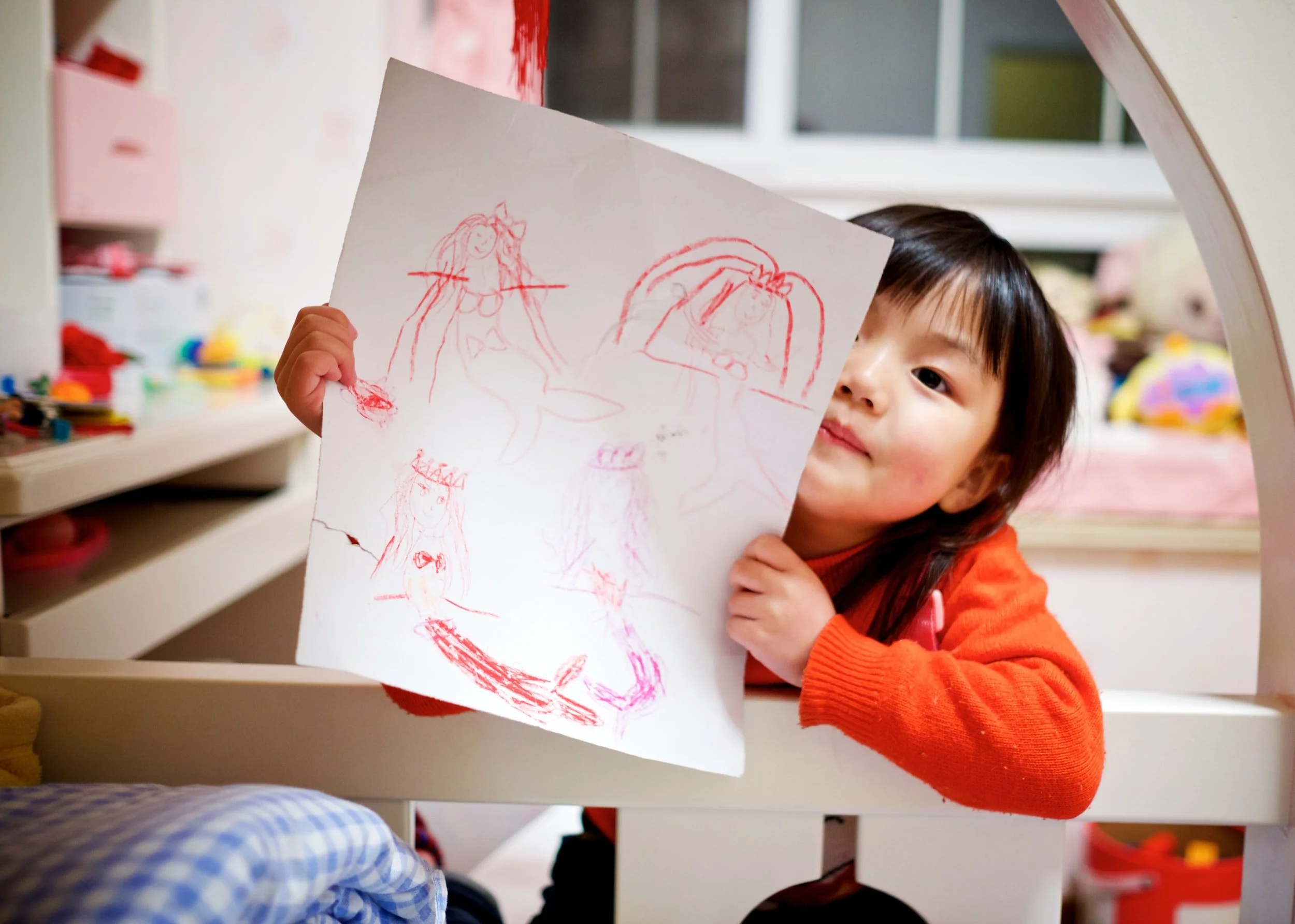As an elder milennial therapist, I’ve decided I don’t need TikTok in my life. I have plenty of apps and screens stealing my attention as it is! Instead, I behave like a responsible adult: I wait for all that TikTok content to make its way over to Instagram, where I consume it a few weeks (or months) late. This is how I discovered that, apparently, intrusive thoughts became kind of A Thing on TikTok for a while this summer.
Suddenly, my feed was awash with memes about “letting intrusive thoughts win.” Who would have guessed that this humble psychological symptom would ever enjoy such fame? Although the memes have slowed down, mentions of intrusive thoughts in my therapy office have not. So, I figured it was time to talk about intrusive thoughts: what they are, why they happen, and what makes them different from other, more “normal” thoughts.
Can You Really “Let the Intrusive Thoughts Win?”
Before we dig into intrusive thoughts, let’s talk about the meme. Maybe you’re an elder milennial, like me, who doesn’t have TikTok and somehow missed this entire phenomenon. Or, maybe you’ve found this article many years from now, when the intrusive thought’s 15 minutes of fame is nothing but a distant memory. Let’s take a journey back in time to this strange cultural moment in the summer of 2023…
According to the website Know Your Meme, catchphrases like “He/she let the intrusive thoughts win” and “Intrusive thoughts won” are “used to caption memes in which people, usually celebrities, exhibit behavior that breaks social norms. In memes, intrusive thoughts are typically confused with impulsive behavior.” Basically, these memes usually feature video of someone doing something kind of random or weird, usually to comedic effect. Said something awkward on live TV? You let the intrusive thought win. Hit a pane of glass with a hammer to see what would happen next? Intrusive thought won.
As an OCD therapist (and a person with OCD), am I offended by these memes? No. I am also a human being with a sense of humor. But they’re not a very accurate portrayal of intrusive thoughts. As Know Your Meme wisely points out, many of these memes show examples of impulsive behavior, as opposed to an intrusive thought.
It’s really common for a person to act on an impulse. It’s much less common for someone to act on an intrusive thought. In fact, that’s kind of an intrusive thought’s whole deal: people really, really don’t want to do what the thought is telling them to. And in almost every case, the person wins over their thought.
Intrusive vs. Impulsive: What’s the Difference?
An impulsive thought happens when we get the urge to do something without reflecting on cause and effect. We’ve all had these moments where we react in a knee-jerk way, without considering whether or not it’s actually a good idea. Most of us are more likely to act impulsively when we’re overwhelmed by emotion: think about the last time you blurted something unfortunate when you were angry.
Generally speaking, impulses are urges that, on some level, we want to act on, even if we know it might not be a great idea. Someone swipes a cookie off the plate because it’s too tempting to resist. A toddler runs off into traffic because they don’t have the self-control to hold themselves back. Curiosity gets the best of that Instagram guy, and he hits the car window with the hammer. Intrusive thoughts can be good, bad, or neutral, but usually they are fleeting. If you ignore them, they go away and never return.
Intrusive thoughts, on the other hand, are almost always negative. In fact, they’re often beyond negative: they’re dark, frightening, or embarrassing. They aren’t always realistic, either: they can be pretty illogical and bizare. Unlike an impulsive thought, intrusive thoughts sometimes repeat themselves. Even if you succeed in ignoring it or pushing it away once, it may pop up again when you least expect it.
Most importantly, intrusive thoughts are usually the total opposite of what a person wants to do in real life. A peaceful person may find themselves having violent thoughts, or a caring person may experience cruel thoughts about a loved one. People who suffer from intrusive thoughts are usually horrified by them. They may worry that they’ll somehow lose control and act on their unwanted thought, even though it’s the last thing they’d ever want to do.
Okay, So What Is an Intrusive Thought?
An intrusive thought is an unexpected, unwanted thought, image, or idea that makes the thinker feel uncomfortable. These thoughts pop into the brain on their own, and they’re not something a person is trying to think about. Because they’re outside of our conscious control, people often feel like these thoughts are “weird” in some way, almost like they have a mind of their own.
Intrusive thoughts often feel out of character, and may go against the thinker’s morals and values. They can sometimes be illogical or bizarre, leaving a person wondering why on earth they’d ever think such a thing. These thoughts are usually negative and cause upset for the person having them, although this can range from mild discomfort to extreme distress, disgust, or fear.
Intrusive thoughts often fall into one of the following “taboo” categories. These tend to be subjects we don’t feel comfortable thinking about, which makes the thoughts extra disturbing when they show up:
Violence, aggression, and hurting others
Sex, puberty, and sexuality
Germs and illness
Bad things happening to yourself or others
Doubt about whether something was done correctly
Doing something “wrong” or immoral
Doing something that goes against your religion or angers God
Some intrusive thoughts are a one-time occurrence. Other thoughts repeat in the thinker’s mind, showing up over and over again. As you can probably imagine, this can cause a lot of stress.
Examples of Intrusive and “Normal” Thoughts
I’ll share some examples here of how an intrusive thought might look when compared to a similar, more typical thought. Please keep in mind that these are just examples and that intrusive thoughts come in many shapes and sizes! The quality of the thought—the fact that it pops up when you don’t want it to—is a big part of what makes it intrusive.
“Normal” thought: I should wash my hands before dinner.
Possible intrusive thought: Maybe touching that expired yogurt container got food poisoning germs on my hands, and now I’ll throw up.
“Normal” thought: What if I get a bad grade on tomorrow’s test?
Possible intrusive thought: What if I scream out a swear word in the middle of the test tomorrow?
“Normal” thought: I’m mad at my sister.
Possible intrusive thought: Having an image come to mind of pushing your sister down the stairs, for no reason, when you’re not angry.
“Normal” thought: Now that I’ve said my prayers, I can go to bed.
Possible intrusive thought: What I did something bad today that I don’t remember, and now God is mad at me?
“Normal” thought: My mom is picking me up from soccer practice tonight.
Possible intrusive thought: Unexpectedly picturing your parent’s car crashing.
Sometimes it can help to see an example in writing, especially if you think you may be suffering from intrusive thoughts yourself. If one or more of these thoughts felt familiar to you, you’re definitely not alone. Many people have intrusive thoughts—probably way more than you’d guess.
Does Having Intrusive Thoughts Mean You’re Crazy?
You may have noticed in my example section above that I put the word “normal” in quotes. That’s because even though intrusive thoughts feel extremely abnormal, they’re actually incredbly common. A 1995 study found that 90% of people report having intrusive thoughts, which means it’s actually crazier not to have them. As uncomfortable as they are, intrusive thoughts are just part of the human experience.
I explain intrusive thoughts to kids in my therapy office like this: imagine your teacher is making you write 100 essays a day. From the time you wake up to the time you go to bed, you’re just writing essay after essay. With all that practice, you’d probably come up with a few pretty good ones. But a lot of them would be mediocre at best. And some of them would be absolute garbage. How could they not be? You’re writing 100 a day!
We have way more than100 thoughts a day. The average person has around 60,000 thoughts. With a number that high, some of them are bound to be less than awesome. Intrusive thoughts are the brain’s equivalent of a burp or a fart. They’re just a little poof of randomness that our brain hands to us asking “I dunno, is this anything?”
So if 90% of the population is having these thoughts, why isn’t everyone panicking? Why aren’t the intrusive thoughts winning? Here’s the deal: most people barely notice their intrusive thoughts. The thought pops up, the person thinks “Huh, weird.”, brushes it off, and moves on with their day. They know it’s not something they really want to do, so they don’t take it seriously. It’s only when people have trouble setting their intrusive thoughts aside that they start to cause problems.
Does Having Intrusive Thoughts Mean You Have OCD?
Having the occasional, fleeting intrusive thought doesn’t mean you have a mental health problem. Like I mentioned above, it’s just part of being human. However, intrusive thoughts can be part of several different conditions. In these cases, the intrusive thoughts tend to be frequent and overwhelming to the point that they start to interfere with a person’s daily life.
Intrusive thoughts are best known as a symptom of Obsessive Compulsive Disorder, or OCD. People with OCD have a much harder time disregarding their intrusive thoughts. They may start to question whether the thought could be true, or if having the thought in the first place means they’re a bad person.
The intrusive thoughts show up over and over, and they cause so much anxiety that the OCD sufferer is willing to do just about anything to make them go away. This can lead to a vicious cycle of repeated thoughts or worries—called obsesions—and repeated behaviors or rituals—called compulsions. Unfortunately, the more a person gives in to their compulsive behavior, the worse the obsessive worries tend to get.
Intrusive thoughts can show up as a part of other conditions, too, such as:
PTSD
Anxiety Disorders
Depression
Eating Disorders
If your child’s intrusive thoughts are happening often and causing a lot of distress, it’s worth speaking to a therapist to see if an underlying condition could be causing the problem.
Therapy Can Help Kids and Teens with Intrusive Thoughts
Intrusive thoughts are freaky. They are weird, they’re unpredictable, and they can be difficult to ignore. But they don’t have to take over your life! If you’ve taken anything away from this post, I hope it’s this: intrusive thoughts are all bark but no bite. They’re not as powerful as they feel, and they can’t compel you to do something you don’t want to do.
We have great therapy options to help kids with intrusive thoughts and OCD. Exposure and Response Prevention was designed specifically to help people cope with their OCD symptoms. It’s a specialized version of CBT, a popular, skills-based therapy approach that has helped people of all ages manage many forms of anxiety.
If you need help for a child or teenager with intrusive thoughts, take a look at the International OCD Foundation’s searchable database to find a therapist near you who has completed ERP training. You can even look for therapists who’ve gotten specialized education in how to practice ERP therapy with kids. You may want to consider broadening your search to include therapists throughout your state, if online therapy is an option for you.
If you live in North Carolina, New York, or Florida, I may be able to help. I’m a children’s therapist trained in pediatric ERP therapy—and I was also diagnosed with OCD as a kid. I’ve been on both sides of the OCD therapy equation, so I know exactly how hard it is for my kid clients to face their fears. I meet with kids in-person in my office in Davidson, North Carolina, and online with families throughout these three states where I’m licensed.
Looking to get started in therapy? Reach out to me here, or check out my About and FAQ pages to learn more about me and my work.














